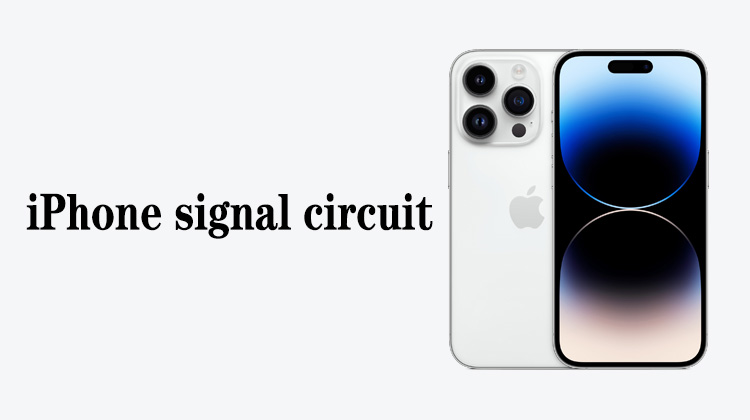1
00:00:00,666 --> 00:00:05,233
This lesson talks about the GSM call channel of Xiaomi mobile phone
2
00:00:05,800 --> 00:00:08,266
Take Mi 10 Pro as an example
3
00:00:09,033 --> 00:00:12,766
In this circuit, we first look at its receiving channel
4
00:00:13,366 --> 00:00:17,833
The antenna shrapnel in the mobile phone is connected to the antenna
5
00:00:18,400 --> 00:00:24,166
The high-frequency electromagnetic wave signal of GSM900 is sensed by the antenna,
6
00:00:24,166 --> 00:00:31,066
and finally becomes a high-frequency electrical signal, reaching the antenna shrapnel J0204
7
00:00:32,866 --> 00:00:36,800
On the circuit diagram it is referred to as LMH
8
00:00:37,866 --> 00:00:44,833
There are not only low-frequency signals, but also mid-frequency and high-frequency signals induced on this line
9
00:00:45,633 --> 00:00:51,600
The received signal of GSM900 reaches the coaxial switch J0304,
10
00:00:51,600 --> 00:00:55,066
and the two pins of the coaxial switch are always on
11
00:00:58,166 --> 00:01:03,533
After it is turned on, it reaches the three pins of the filter FL0301
12
00:01:11,033 --> 00:01:16,733
After filtering out the clutter, output from the eight pins, and then reach a small antenna switch
13
00:01:21,800 --> 00:01:25,766
The eight-pin and six-pin of the small antenna switch are turned on,
14
00:01:26,100 --> 00:01:29,866
so that the signal reaches a low-frequency band filter
15
00:01:31,966 --> 00:01:35,533
It only passes low frequency band signals
16
00:01:41,800 --> 00:01:45,833
The received signal enters from pin 5 and exits from pin 2,
17
00:01:45,833 --> 00:01:51,766
and then reaches the low-frequency antenna switch and power amplifier U0600
18
00:01:57,500 --> 00:02:04,433
The signal passes through the antenna switch and comes out from pin 44 to form the receiving signal of B8
19
00:02:06,033 --> 00:02:11,166
Because the reception of GSM900 and B8 take the same channel
20
00:02:11,433 --> 00:02:15,833
So B8 reception is GSM 900 reception
21
00:02:18,633 --> 00:02:24,300
The signal continues on to the receiving amplifier, which is identified as an LNA in the drawing
22
00:02:27,333 --> 00:02:34,733
After internal power amplification, it comes out from the fourth pin and reaches the A8 pin of the RF chip U1301
23
00:02:39,000 --> 00:02:43,466
After the high-frequency carrier is removed by radio frequency,
24
00:02:45,633 --> 00:02:50,800
preliminary demodulation is carried out, and it is sent to the Qlink bus
25
00:02:52,066 --> 00:02:57,433
This Qlink bus contains voice signals, which are given to the baseband CPU
26
00:02:58,133 --> 00:03:01,533
The baseband CPU demodulates the received signal,
27
00:03:01,533 --> 00:03:06,366
and sends the demodulated sound signal to the large CPU through the bus
28
00:03:07,700 --> 00:03:10,133
This is its receiving channel
29
00:03:10,466 --> 00:03:14,600
Its transmission channel starts from the baseband CPU
30
00:03:15,033 --> 00:03:19,733
The baseband CPU modulates the sound signal sent by the large CPU,
31
00:03:19,733 --> 00:03:23,700
and finally sends it to the RF transceiver through the Qlink bus
32
00:03:25,966 --> 00:03:32,133
This is a low frequency signal containing speech that cannot travel long distances and quickly over the air
33
00:03:33,333 --> 00:03:37,366
The radio frequency chip generates a high-frequency carrier signal,
34
00:03:37,366 --> 00:03:43,333
and carries the low-frequency voice signal on the high-frequency carrier to form a transmission signal
35
00:03:45,500 --> 00:03:52,000
The transmission signal of this GSM 900 is already a high-frequency signal, and it has to continue
36
00:03:52,766 --> 00:03:58,266
It reaches the low-frequency power amplifier through capacitive coupling for power amplification
37
00:04:04,533 --> 00:04:10,833
After internal power amplification, it is output from the second pin of U0600,
38
00:04:11,300 --> 00:04:14,066
and then reaches the antenna end
39
00:04:20,433 --> 00:04:26,200
After the filter is filtered to reach the six-pin and eight-pin output of the small antenna switch,
40
00:04:26,200 --> 00:04:29,233
and then reach the eight-pin of the total filter
41
00:04:32,333 --> 00:04:39,433
The three-pin output of the filter, through the conduction of the coaxial switch, finally reaches the antenna shrapnel
42
00:04:40,500 --> 00:04:44,333
The antenna shrapnel is in contact with the antenna
43
00:04:44,766 --> 00:04:51,500
The antenna converts this high-frequency transmission signal into a high-frequency electromagnetic wave signal
44
00:04:51,500 --> 00:04:53,900
and transmits it to the base station
45
00:04:55,166 --> 00:04:57,266
This is its launch channel
46
00:05:01,400 --> 00:05:07,666
It should be noted here that the line from the second pin of the low-frequency power amplifier to the antenna end
47
00:05:07,666 --> 00:05:10,400
is shared by receiving and transmitting
48
00:05:10,766 --> 00:05:16,900
The separation of receive and transmit begins at the rear end of the low-band power amplifier
49
00:05:18,400 --> 00:05:24,266
The reception is from the 44 feet to the receiving channel, and finally to the radio frequency,
50
00:05:24,266 --> 00:05:29,733
and the transmission is from the radio frequency to the low-frequency power amplifier
51
00:05:30,066 --> 00:05:34,100
This is the channel of Xiaomi's GSM 900 call
52
00:05:34,533 --> 00:05:39,000
GSM 900 is actually the calling channel of China Mobile
53
00:05:39,566 --> 00:05:41,700
That's all for this lesson






